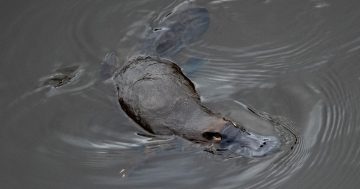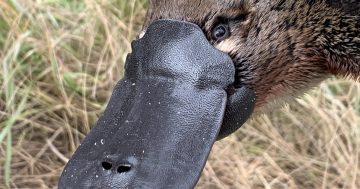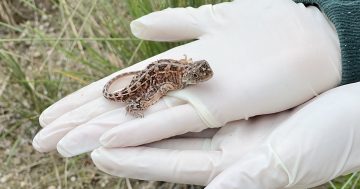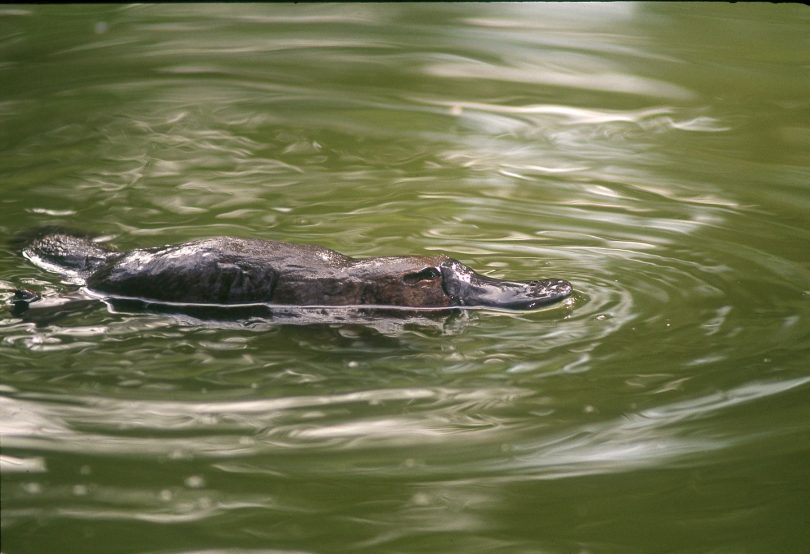
Not much is know about platypus numbers in the Canberra region. Photo: ACT Government.
The platypus may be one of the nation’s most popular creatures but surprisingly little is known about the unique monotreme in the Canberra region.
It doesn’t help that they are shy and not particularly sociable, from a human perspective, appearing mostly at dawn and dusk. Many a hopeful spotter has had to give up the quest after staring in vain into a pool or along the riverbank.
Waterwatch for the past six years has been trying to fill that knowledge void by conducting surveys along stretches of water in a bid to determine just how many there are out there and assessing the condition of their habitat.
The ACT Government and Icon Water-backed organisation has begun its seventh volunteer-based August surveys as part of Platypus Month, expanding from 22 last year to 37 surveys.
Volunteers turned out in record numbers last year but Waterwatch has 320 spots to fill this month.
The group survey method, used extensively by the Australian Platypus Conservancy in Victoria, is considered a reliable way to assess numbers and the health of the waterway.
It involves placing around 10 people along a 10 km stretch of a river for an hour, and every 10 minutes gauging whether they see a platypus.
Regional Waterwatch Facilitator Woo O’Reilly says the platypus can be a cryptic character and difficult to study, and is also clever enough to avoid traps laid by researchers.
“These surveys give us an understanding of platypus numbers in rivers and creeks in Canberra and the surrounding region. It’s not the presence or absence of platypus we’re looking at, but rather the number of animals we find in a given stretch of river,” she said.
”The more you do and the more diversity of habitat the more you should be able to get a sense of what is an average number living in a stretch and how they are faring.”
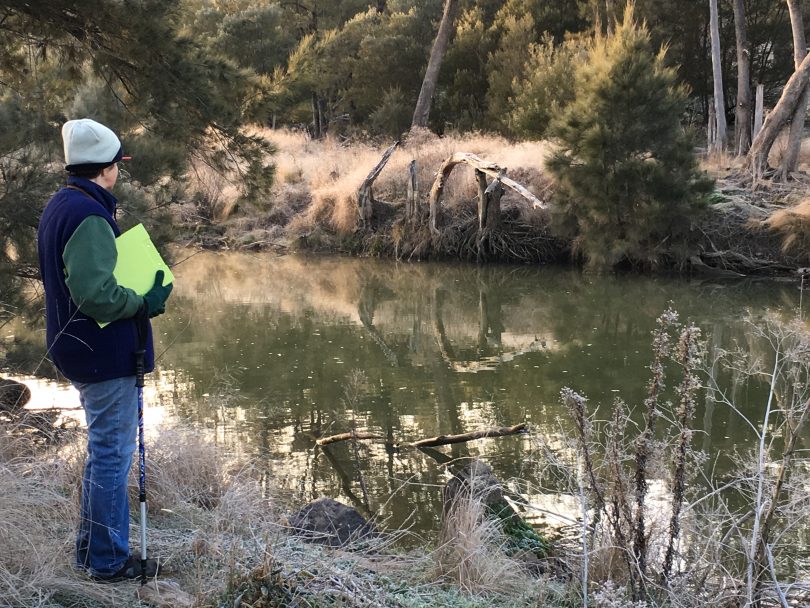
A platypus spotter waits on an elusive visitor. Photo: Waterwatch.
Waterwatch will conduct four surveys per reach – two at dawn and two at dusk – and includes eight sites such as the Queanbeyan River hotspot in town, on the Murrumbidgee at Point Hut Crossing and near Bredbo.
Tidbinbilla Nature Reserve staff will also conduct surveys and contribute to the overall data set.
Ms O’Reilly says platypus have had to contend with drought in the last two years and, of course, the fires last summer, which would have taken a toll on habitat in the Namadgi National Park.
Last year on the Murrumbidgee, numbers appeared to have a slight bump after a little bit more rain and this week (Wednesday) in the first look at Point Hut Crossing two were seen, but it’s hard to know just how many should be there without a reference number.
The river there is also affected by sand, blackberry, and an increase in sediment and ash from the fires. The stretch near Bredbo is in slightly better condition and up to seven have been seen before in that one-kilometre stretch.
Ms O’Reilly says sites of concern include Jerrabomberra Wetlands where numbers have been down the last few years and the lower Molonglo where not a single platypus was spotted last year.
”There is a lot of development going on down that way and we’re concerned about that part of the world and the impacts,” she says.
Platypus do not have any endemic diseases but water quality will affect their main food source, water bugs, and poor nutrition may impact their all-important fur.
Other threats include litter such as hair ties and discarded fishing gear which can get tangled around their bill and neck and be potentially fatal, as well as the infamous opera house nets that take only minutes to drown them.
Ms O’Reilly says the aim is to validate and replicate the research methods and eventually partner with academic researchers and the like of the Platypus Conservancy.
”My role is to ensure not only that we get that data but we use it as an opportunity to partner up with other organisations and other ways to increase our understanding of platypus,” she says.
”The surveys are only telling us a small part of the picture and we’re trying to use that momentum to build and get other people engaged.”
Minister for the Environment and Heritage Mick Gentleman says the surveys will inform land managers and researchers about the population status of the platypus.
He urged people to join the project.
“Everyone is welcome to help and there’s no prior experience required,” he says.
“The one-hour surveys take place in mornings and afternoons, so you don’t need to be an early riser to take part. Warm clothes, binoculars and a watch or phone is all that volunteers are required to bring on the day.
“August is Platypus Month because late winter is the ideal time for spotting platypus as they spend more time feeding and the males are out preparing for the breeding season.”
To learn more go to the Waterwatch website.












